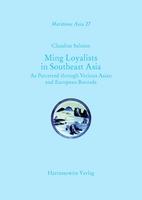|
|
more titles of the subject:
Download:
In order to attain a panoramic view of the Ming loyalists who, after the rise of the Qing in 1644, settled in various port cities of what is today Vietnam and the Malay World, this study seeks to make use of various European and Asian sources such as travelogs, commercial records, genealogies, inscriptions, old maps, drawings, and archaeological findings as well as researches focused on a few leading Chinese figures.
The first chapter, after analyzing how some European observers perceived the Ming refugees, tries to provide a diachronic view of the various migratory waves lasting for more than forty years, and their geographical distribution. The second chapter emphasizes some communities, for which the documentation is rather rich, to investigate the strategies used by the loyalists to adjust to the local environment. This includes the part their leaders played in the host countries, their contribution to urbanization, their attempts to solve local political issues, their role in the development of agriculture and Asian maritime trade, thanks to their close contacts with the Zheng state in Taiwan, but also to their connections with European companies. The third and last chapter considers the eventual posthumous fame of these loyalists within Southeast Asia and abroad, especially in Europe during the 18th century and even later, and more recently in the Malay Peninsula, Singapore, and in South China, where some loyalist heroes have been given pride of place in local history, and also in historical fiction. The appendices offer an insight into the concerns of a few Ming loyalist leaders and the manner in which they expressed themselves, by presenting some of their writings. |






